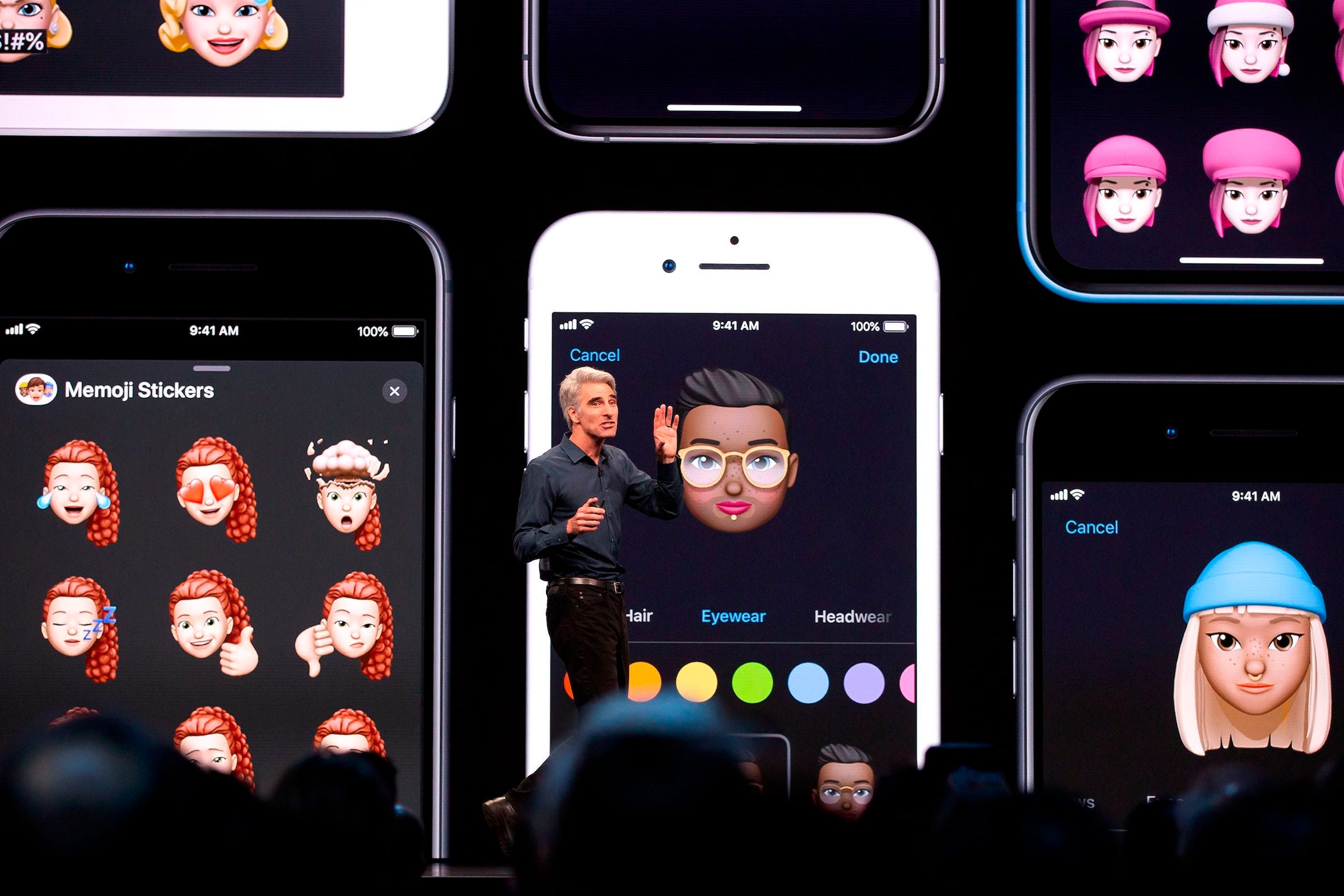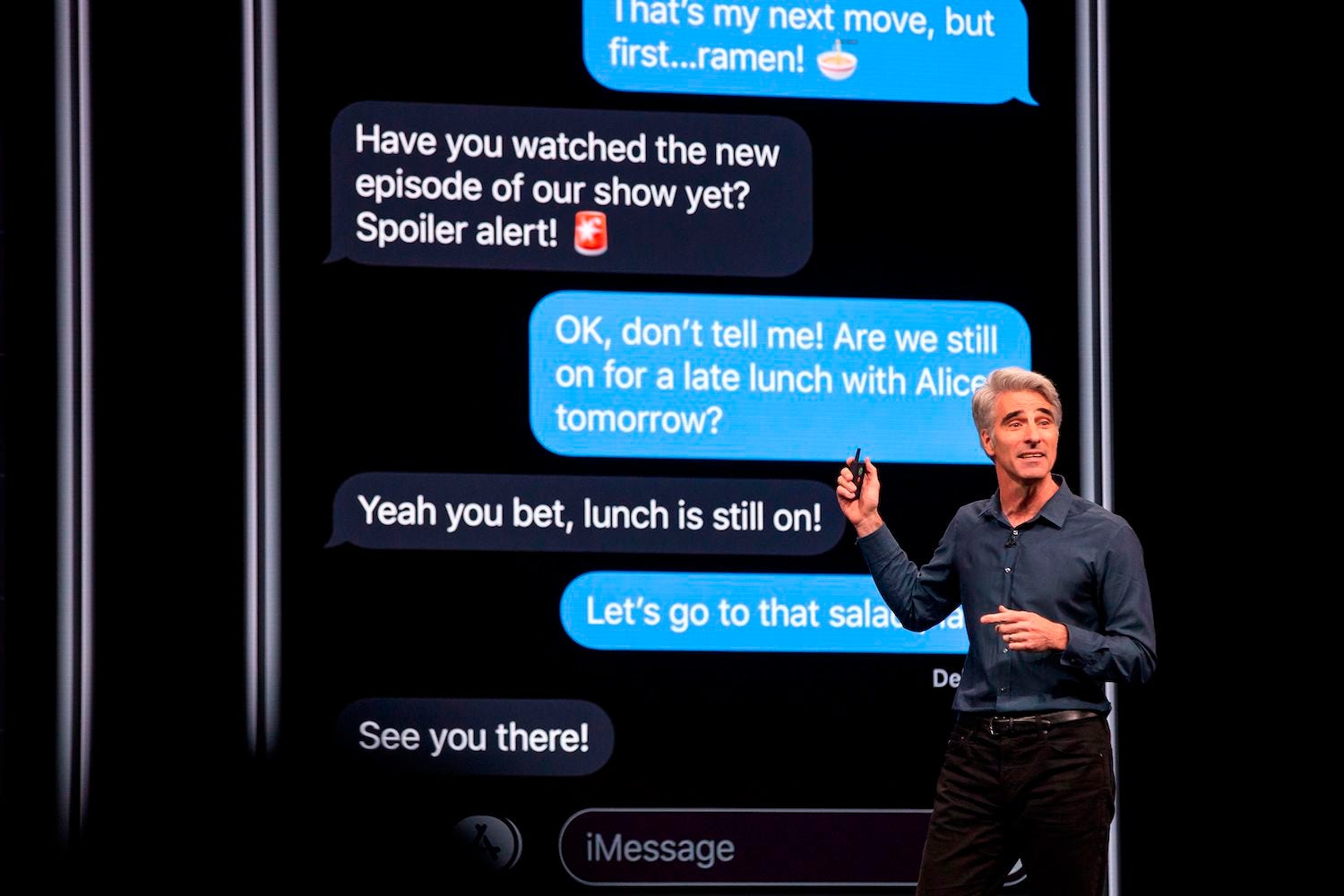At WWDC, Apple debuted a slew of new features that let users connect with their families and friends right inside Apple’s apps — no social networks needed
By Mark Wilson
“Contacts.” It’s such an impersonal word for the friends and family in your life, stored in your iCloud under their names and numbers. For years, Apple has overlooked the power of these contacts, designing its operating systems around apps rather than the social connections of the people who use them. But yesterday, at Apple’s Worldwide Developers Conference (WWDC), Apple announced a series of new features for its upcoming iOS 13 operating system that put users and their existing social networks at the center of the Apple ecosystem of apps and services. It’s an enticing vision of software for a post-Facebook era.
Take the new Notes. In iOS 13, you’ll still be able to make a standard Reminder or To-Do list. But since Notes knows your contacts, now you can mention people inside the app to tag them (it seems to work much like tagging on Facebook—but presumably, Notes will send an iMessage notification directly to the tagged friend). Tagging allows you to schedule a call for a meeting in a To-Do list. Then, iMessages will send the tagged attendees a reminder 10 minutes before that meeting. In this sense, iOS 13 isn’t organized by apps, it’s organized by your contacts. Your relationship, and plans with someone, are dictating how the OS responds and linking one app to another.

A similar thing happens with updates to how iOS handles photos. For years, Apple has been able to spot the faces of friends and family in photos you took on the iPhone. But now, if you view a photo with friends inside, Apple will suggest you message it to those same friends. That’s because the OS is thinking in terms of relationships. It knows you very well want to share a photo with friends in it with those friends.
But Apple’s new photo tricks aren’t just there to convince us to share. By building people into the interface, Apple is organizing your media under a taxonomy of relationships. Take the updated photo feed, which will curate a personal collection of videos and photos of your life over the last few weeks, months, or years. Based on Apple employees’ comments onstage yesterday, it sounds smart enough to automatically highlight important moments you care about — for instance, your spouse’s birthday — in your feed. You can also sort the feed by person, so if you want to only see a history of photos with your daughter in them, done. Apple isn’t just allowing you to edit photos, but edit your memories through the people in them.
iOS 13’s social dynamics don’t end with people you know. They also extend to those you don’t. Another new feature allows you to broadcast your name and photo when calling new contacts. That basically means your iPhone is speaking a secret language to other iPhones, saying “this isn’t a random spammer, we sort of vouch for this guy.” You are not calling as some phone number. You’re calling as a person.

Apple’s 3D-animated Memoji also received an update linked to socializing. They now allow you to create a figure with your choice of hair, makeup, and accessories — an avatar that is less generic and more customized to reflect your identity. Meanwhile, Apple announced that the full-motion Memoji can now be turned into stickers for iMessages or your profile. The secret ingredient inside your library of cartoon keyboard graphics is you.
As a final step solidifying this trend of personalizing the OS, Apple introduced a new API to developers called Sign In With Apple. It will allow users to sign in to iPhone apps using their Apple IDs instead of identifiers from Facebook or Google. There’s a big security play here for Apple, but there’s also a social play. It means Apple could build a whole social network on top of your apps, should it choose to. It’s the sort of update that will allow Apple to bring your contacts into more experiences alongside you; imagine listening to an album with a friend on Spotify while going head-to-head in Angry Birds, with your memoji celebrating every combo.

So why is Apple leaning into the relationships between people with so many new features in iOS? Perhaps the company senses an opportunity. Perhaps it sees that a generation of young people would rather share their moments to small, private groups rather than publicly on services like Facebook. After all, the iPhone’s single must-have feature in 2019 isn’t its depth-sensing camera or advanced microprocessors — it’s iMessages, a messaging app with rich multimedia features, like sending long notes to friends and marking up each other’s photos by hand. (Every Android user on the planet knows the pain of being half locked out of iMessage conversations, losing out on jokes and photos shared by a family of Apple users.) Apple is already building services that allow for rich, multi-person communication experiences. Now, it’s linking those services together.
As Apple continues to diversify its many operating systems — WatchOS and the new iPadOS will both operate semi-independently from iOS and MacOS — it looks like people will be the glue binding Apple together. It’s a safe bet that while liking photos on Facebook and other social networks may one day go out of fashion, the actual people in them never will.
Mark Wilson is a senior writer at Fast Company who has written about design, technology, and culture for almost 15 years. His work has appeared at Gizmodo, Kotaku, PopMech, PopSci, Esquire, American Photo and Lucky Peach.